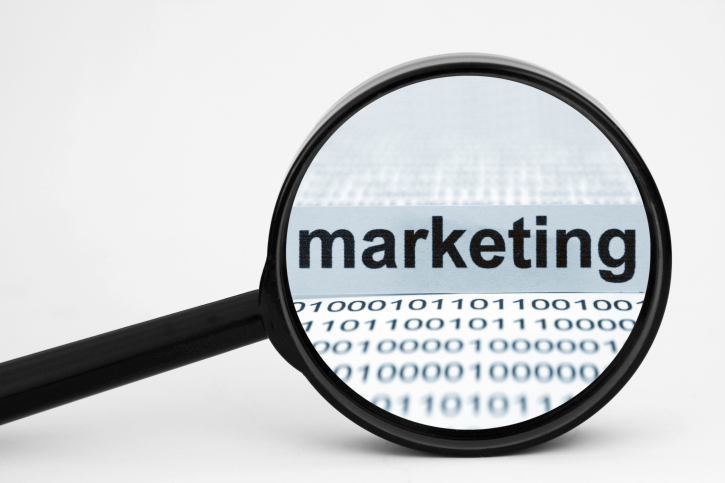Google said, “links with optimized anchor text in articles or press releases distributed on other sites,” is an example of an unnatural link and violates its guidelines. The bottom line is this:
If you are publishing a press release or an article on your site and distribute it through a wire or through an article site, you must make sure to nofollow the links if those links are “optimized anchor text.”
The example Google gives is:
There are many wedding rings on the market. If you want to have a wedding, you will have to pick the best ring. You will also need to buy flowers and a wedding dress.
Let’s face it: If you are paying to distribute a press release via a wire service, that is essentially a form of advertising. On the contrary: If a journalists or blogger sees that press release on your website or in a Google search and writes a story sourcing your organization or brand, that is editorial.
I caught up with SEO and PR pros to hear what they had to say about the recent press release link alert.
“Google says don’t cheat the system. Penalizing keyword-rich anchor text in press releases is its next step in enforcing that system.”-BClay
— Bruce Clay, Inc. (@BruceClayInc) August 7, 2013
“Press releases have been around forever and they are still good for what they were originally created for: traffic and branding. It’s important to remember here the difference between navigational links and transactional links,” said Bruce Clay, founder and president of Bruce Clay, Inc., a global Internet marketing optimization firm providing both services and education. “Navigational links use anchor text of a domain name or a company name or ‘click here.’ They point to an entity. Transactional links use keywords in the anchor text, passing some additional information in the link. When your goal is to get traffic and branding, like it is with a press release, then you use navigational links in moderation and it doesn’t matter if it has nofollow.”
Social PR Tip “Google treats press releases like ads; they are a paid mention, essentially an advertisement. Therefore the marketer’s optimization bias should be toward conversion – getting attention and call to action, etc.”
Question: Is there still room for press release optimization in the form of keywords, headlines, titles, descriptions, etc?
“Press Releases can still rank,” notes Joe Laratro, PubCon lead moderator and President of Tandem Interactive. “They just shouldn’t be there to pass link value.”
Advice on Content and Links from SEO-PR industry icon Greg Jarboe:
“I give clients two pieces of advice about press releases and SEO today. The first is about content and the second is about links,” Jarboe goes on to educate and rolls out some key milestones that lead up to the demise of anchor text links:
First, Google’s “Panda” update significantly affected most online press releases by tackling the difficult task of algorithmically assessing website, content, page and article quality. Since this dramatically impacts press release writing and optimization, it’s worth taking a step back and explaining some of the ideas and research that drove the development of Google’s algorithms.
On May 6, 2011, Google Fellow Amit Singhal posted some questions on the Google Webmaster Central Blog that one could use to assess the quality of a website, content, a page, or an article.
Singhal said, “These are the kinds of questions we ask ourselves as we write algorithms that attempt to assess site quality. Think of it as our take at encoding what we think our users want. ”
10 Questions PR and SEO pros should also ask themselves when writing a press release:
-
Would you trust the information presented in this article?
-
Is this article written by an expert or enthusiast who knows the topic well, or is it more shallow in nature?
-
Does this article have spelling, stylistic, or factual errors?
-
Does the article provide original content or information, original reporting, original research, or original analysis?
-
Does the article describe both sides of a story?
-
Was the article edited well, or does it appear sloppy or hastily produced?
-
Does this article provide a complete or comprehensive description of the topic?
-
Does this article contain insightful analysis or interesting information that is beyond obvious?
-
Would you expect to see this article in a printed magazine, encyclopedia or book?
-
Are the articles short, unsubstantial, or otherwise lacking in helpful specifics?
How many Google engineers does it take to change a style guide?
Reality check: press releases need to follow Google’s “Quality Guidelines” for articles to enjoy better ranking. Besides, if you look at the questions that Google engineers ask themselves, they are the questions that PR people and SEOs should be asking themselves, too — even the one about describing both sides of a story.
PR Links are Not Google Magic
The links from a press release to your web pages will not improve their ranking in Google, reminds Jarboe. and they haven’t since 2005, when Matt Cutts, head of Google’s Webspam team, has said in his Gadgets, Google and SEO blog:
“I’m not against doing press releases; press releases can be a useful part of getting traffic and building a brand. For ranking in Google, however, the main benefit of a press release is not direct links or PageRank from the press release directly; it’s primarily the people who decide to write an article and link because of that.”
Matt Cutts – Head of Google’s Webspam team
Social PR Tip: Two reasons to add links to press releases: Drive Traffic and Attract Media.
1. Drive traffic to your website.
Driving traffic is one of the primary objectives of website SEO, according to the SEMPO State of Search Report, published by Econsultancy. It can be one of the important objectives of press release SEO, too.
2. Increase the chance of media coverage from journalists or bloggers
Adding links to your release is beneficial is that the more useful the content you link to, the greater the chances that journalists and bloggers will find that content valuable to their readers and also link to it. The sites that link to you can provide context about the subject matter of your site, and can indicate its quality and popularity.
However, Google has just updated its definition of link schemes. Google now says that “creating links that weren’t editorially placed or vouched for by the site’s owner on a page, otherwise known as unnatural links, can be considered a violation of our guidelines.”
And among the examples of unnatural links that violate their guidelines, Google listed : “Links with optimized anchor text in articles or press releases distributed on other sites.”
You can prevent PageRank from passing in several ways, such as:
-
Adding a rel=”nofollow” attribute to the <a> tag
-
Redirecting the links to an intermediate page that is blocked from search engines with a robots.txt file
Jarboe now advises clients to either use direct URLs linked within press releases that are followed, or, to be safe, nofollowing links in press releases.
For the latest public relations industry point of view and guidance from PRNewswire’s Sarah Skerik, check out this blog post.
Don’t link, don’t smoke, what do you do? I guess we’re in SEO rehab. Clean up the content or you’re out. Is the online public relations world over as we know it?
You can read 12 Ways to Optimize Press Releases & Avoid Google Penalties in my article on Search Engine Watch just published http://searchenginewatch.com/article/2287902/12-Ways-to-Optimize-Press-Releases-Avoid-Google-Penalties.
- 4 Ways to Raise Your Social PR Stock with Twitter - November 11, 2013
- How to Survive Google’s Press Release Link Ban - August 9, 2013


